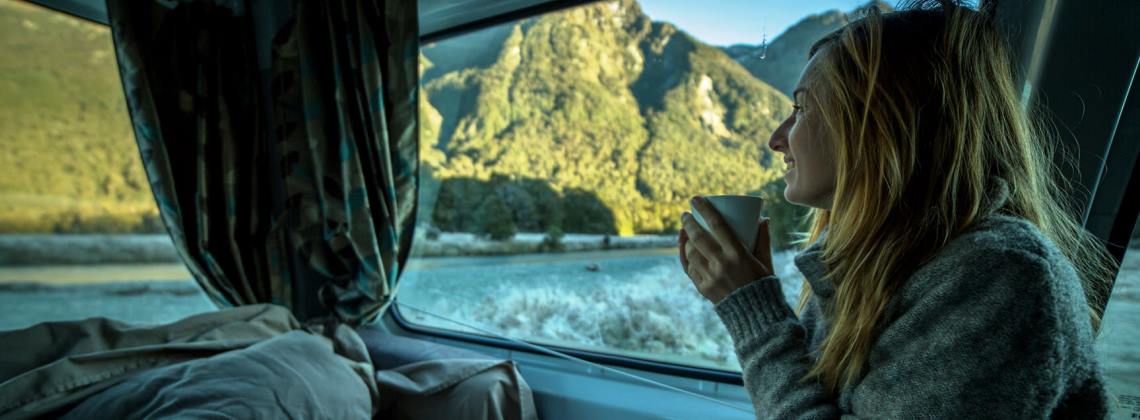
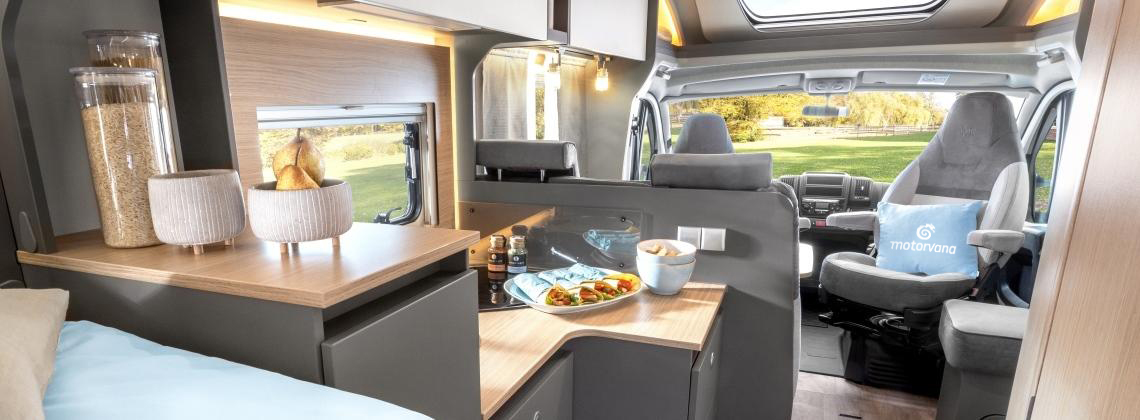
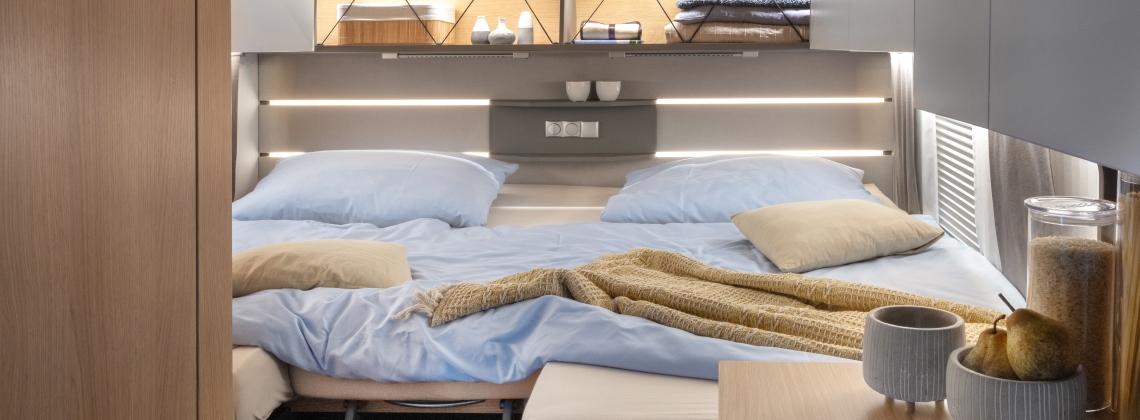
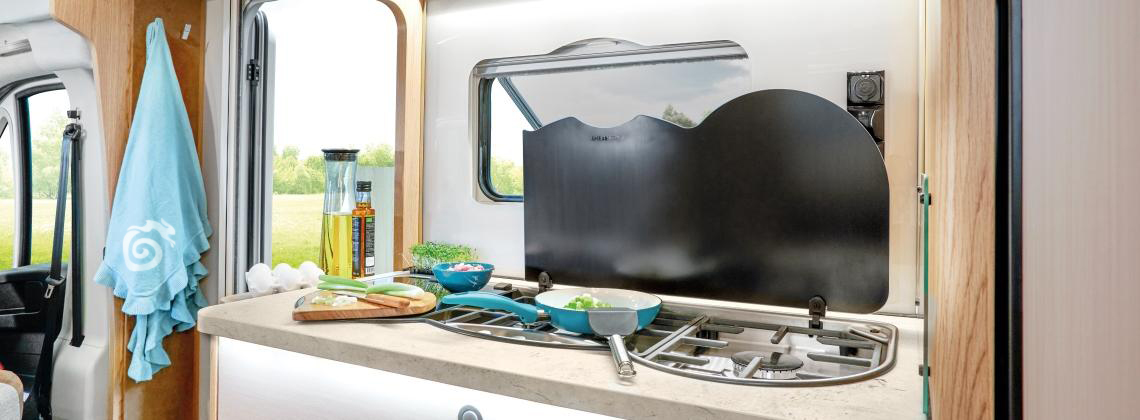
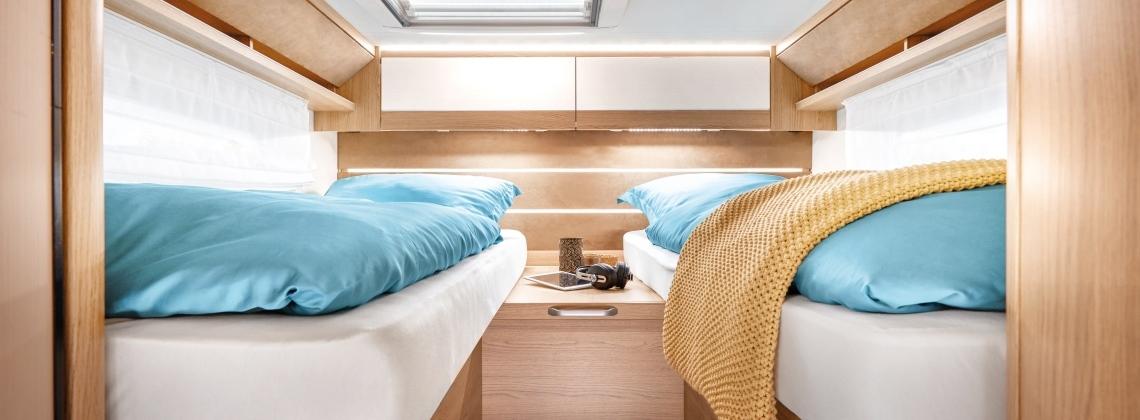
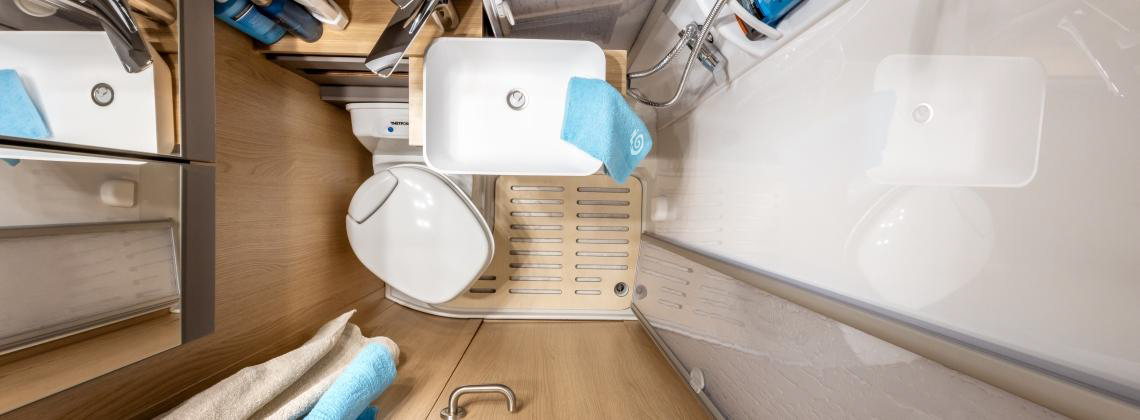
Our RV Hire Reviews average 4.7 out of 5, this based on a massive 1264 reviews!
MOTORVANA uses buying power to offer you big New Zealand RV hire savings. Moreover we facilitate the whole New Zealand motorhome hire and camper van rental booking process, providing ultra-responsive customer support and a true total RV rental cost you can count on. We give you peace of mind.
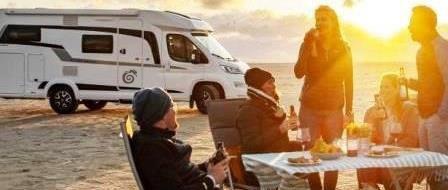
New Zealand RV rental SPECIALS: If you place your New Zealand motorhome rental booking request with Motorvana online, our software will present any relevant specials from the RV hire vendor.
Book early to secure availability. Many clients book their New Zealand RV hire months in advance. Moreover, prices tend to be lower the earlier a motorhome rental booking is made.
When considering travel to New Zealand, the biggest decision you need to make is whether to travel the North Island, the South Island, or both. If both, you need to decide whether to travel between them by ferry (with your rental campervan or motorhome), by air (booking two roundtrip RV rentals, one per island), or both (booking a one-way RV hire from North to South between Auckland and Christchurch, or vice versa, the ferry crossing taking 3.5 hours but being beautiful).
Nevertheless, whereas separation is king in Australia, proximity is king in New Zealand. About the size of, say, Colorado, New Zealand is tiny compared to the USA, Australia or Europe. And its population is just 4.5 million residents. Yet New Zealand is incredibly fractal and diverse. There are 15,000 kilometers of coastline, much of it spectacular, from the white beaches of the North to the fiords of the South. The interior of the land features volcanoes, jungles, deserts, wineries, rivers, lakes, mountain ranges and some of the best sailing, surfing, kayaking, rafting, boating, fishing and trekking in the world.
RV camping culture is vibrant and the associated infrastructure pervasive in New Zealand. Community ("council") parks, district parks, national parks, and private holiday parks abound and offer facilities and campsites designed for RVers. Free camping — alias freedom camping, dispersed camping, dry camping, wild camping, boondocking — is common throughout the country, especially at primitive campsites within public parks. Every district and council has different bylaws regarding free camping. Some will not let you free camp within a kilometer of the town, or will only let you stay in a carpark for one night. Many of these rules are signposted using a sign graphically disallowing tents and motorhomes or a sign graphically allowing self-contained motorhomes only (i.e. campervans having toilets). These locally administered campsites range from basic spots in forest parks to RV parks adjacent sporting grounds, parks or other recreation areas.
Moreover, many vineyards, olive groves and farms allow you to free camp on their land! See Okay2stay.
The national parks of New Zealand are protected natural areas (reserves) administered by the Department of Conservation (DOC). There are three national parks on the North Island, ten on the South. Free camping on DOC land is generally allowed, with exceptions. There are some places on DOC land where you cannot camp because the location has a special value; for example, it's a Maori burial site (urupa) or a protected plant or animal habitat. You cannot camp on DOC land except where signs allow it. The DOC maintains more than 200 campgrounds per se in New Zealand, whether in national parks or protected forests or at beaches or lakes. Some DOC campsites are unpowered, and some have more facilities than others; so if you want to plug in your motorhome or campervan, check the facilities in advance. "Basic" DOC campsites are free, without power but do have running water and toilets, albeit no garbage bins. "Standard" DOC sites are usually unpowered but in addition to running water and toilets they sometimes include garbage bins, barbeques, and/or picnic tables. "Serviced" DOC sites in addition usually feature power and/or facilities for cooking, showering, and perhaps even for laundry. Some Standard and Serviced DOC campsites are free to use whereas some charge a modest fee of about NZD 15 per person.
In contrast, a private holiday park campsite powered for RVs averages around NZD 40 per night for two people.
On the North Island the best RV campgrounds included Kiwi Camp National Park, Tauranga Tourist Park, and Houhora Heads Motor Camp. Among the favorites on the South Island are Murchison Motorhome Park, Central Park Camping Greymouth, and Deer Valley Campsite.
Book in advance if possible. Yet with mere district and community parks there is usually no need or opportunity to book in advance.
Download the free Campermate app to find campsites, toilets and waste dumping stations. It also includes lots of other helpful information such as tips from other travelers and areas with WiFi access.
Read independent reviews from other travelers and discover 1500 camping locations throughout New Zealand with Rankers' Camping NZ.
Your entrypoint to New Zealand will surely be the capital, Auckland. Hilly, verdant and sunny, Auckland, the "City of Sails", is known for its harbor and its gastronomy. Auckland is by far the largest and most diverse city in New Zealand, with easy access to the top of the North Island (Northland) as well as the Coromandel Peninsula and central North Island.
Dishing up coastal scenery, history, and culture, the winterless Northland offers a fun-filled, adventurous introduction to New Zealand. The subtropical region of Northland continues north from Auckland to the very top of the North Island, capped off by Cape Reinga. In Northland you will discover an abundance of islands and secluded beaches, ancient kauri forest, lush native bush and an incredibly rich history.
The classic road trip to this northern extremity is best made up one coast and down the other. Explore the rugged west coast and the relaxed east coast. In the beautiful Bay of Islands you can sail, cruise, swim with dolphins, snorkel or just relax. Auckland to Paihia is an easy 3-hour drive on State Highway 1, with plenty of highlights.
The east coast of New Zealand's North Island between Auckland and Hawke's Bay is another classic New Zealand road-touring territory, complete with superb scenery, friendly beaches and wineries galore. The Pacific Coast Highway offers the main route, starting in Auckland taking in the Coromandel, coastal Bay of Plenty and Eastland on its way to Hawke's Bay. Enjoy panoramic ocean views, and beaches ranging from legendary surfing hangouts such as Mount Maunganui to tranquil coves secreted around the Coromandel and Eastland. Great swathes of this Pacific Ocean shore remain predominantly natural and peaceful. Many of the towns are also sleepy, particularly in Eastland. Swimming, hiking, cycling and boating abound, as do acclaimed art deco architecture and world renowned wineries.
A short, pretty drive from Auckland and packed full of dazzling sights is the North Island's volcanic heart. The Thermal Explorer Highway leads the way from Auckland to the Central North Island, with bubbling mud pools, steamy vents, geysers and colorful silica terraces around Rotorua — a small city equally famous for its vibrant Maori culture and Vegas-like strip of restaurants and hotels (hence its epithet "Roto-Vegas"). The mighty and swift Waikato River is graced with many waterfalls and cascades and is ideal for canoing and kayaking. Farther south is New Zealand's largest lake, Taupo, with a shoreside resort town. A magnet for boaters and watersports enthusiasts, Taupo is also a good base for adventures on the Central Plateau — cut through by the spectacular Desert Road. The centrepiece of this otherworldly plateau is Tongariro National Park, a UNESCO World Heritage site comprising three volcanoes amid landscapes featured in The Hobbit and Lord of the Rings films. Maori sacred sites dot the region. The park's extensive and varied trail network includes the world-famous Tongariro Alpine Crossing, New Zealand's most popular day hike.
Just to the west is the Waitomo region, best known for its rivers and caves — especially its glowworm caves.
To the southwest the Taranaki and Manawatu-Whanganui region is quiet and bounded by the cliffs, black sands and surf beaches of the Tasman Sea coastline. Boutique galleries and museums abound. Don't miss the remote Forgotten World Highway, which runs between Taumarunui and Stratford. Spanning 155 kilometers, this highway takes you through epic landscapes and unspoiled scenery. The halfway point is Whangamomona, a tiny township unchanged since the 1920s and so remote the townsfolk in 1989 declared it a republic. You can even obtain a passport from the local hotel! Surf Highway 45 is a famous coastal road from New Plymouth to Hawera which leads to a number of legendary surf beaches, including Fitzroy Beach. Hailed one of the best mid-city surf spots in the world, this beach in Plymouth town is renowned for its excellent barrels and hollow waves. At the opposite end of town is East End Beach, another great surf spot with slightly smaller waves but very consistent surf.
Nearby, Egmont National Park is remarkably circular, extending to a radius of around 9 kilometers from the pinnacle of volcanic Mount Taranaki. The park features an extensive walking track network, ranging from short strolls to the three-day Pouakai Circuit. Whanganui National Park encompasses the deeply ridged forestland surrounding the Whanganui River. Kayaking and canoeing adventures are big here, with hiking, mountain biking, jet boating and scenic drives.
The Wairarapa district and the city of Wellington on the southeast end of the North Island offer many delights. Wairarapa boasts a wild coastline, great bicycle trails, and the welcoming townships of Carterton, Greytown, and Martinborough. Wellington is New Zealand's San Francisco. Bask in the café culture, visit the Te Papa Museum, Mount Victoria Lookout, or just stroll the beautiful waterfront.
Wellington is also jumping point to the South Island. …
Known for great weather, world-class wineries, three national parks and a captivating coastline, the districts of Nelson and Marlborough await across the Cook Strait. These districts are in the banana belt which wraps across the north end of the South Island. With easy access from the North Island via ferry from Wellington, and incredible coastal views along the routes from other areas of the South Island, Nelson and Marlborough are a can't miss destination. This an epic coastline, from the baroque Marlborough Sounds — comprising some 1/10 of the national coastline in terms of myriad isles and peninsulas — to the sandy coves of Abel Tasman National Park to the graceful dunes of Golden Bay. The main large port is Picton on the mainland, at the head of Queen Charlotte Sound. Picton is at the northern terminus of the South Island's main railway and state highway networks and receives the ferry from Wellington. The main small-boat port, Waikawa, is one of New Zealand's largest and provides a base for leisure sailors and vacationers alike. Marlborough's capital, Blenheim, is in the heart of the Wairau Valley, epicenter of New Zealand's thriving wine industry. Nelson is the region's biggest town, its top attractions being its arts scene and generally glorious rural and seaside surroundings. Neighbouring Motueka town is a pleasant gateway to Abel Tasman National Park, as well as to Kahurangi National Park and, over Takaka Hill (a winding mountain pass), the ultra-relaxed and charming Golden Bay. Inland is Nelson Lakes National Park, popular for camping, trekking and fishing. Mountain peaks in the park have elevations ranging from approximately 1800 m (5900 ft) to 2300 m (7500 ft).
At the southeastern boundary of Marlborough, in Canterbury district, is Kaikoura peninsula, world famous for whale watching. Canterbury is the largest district in New Zealand and very diverse, from the eclectic charm of Christcurch to the alpine severity of the highest peak in Australasia: Aoraki/Mount Cook. Swim with the Hector's dolphins, world's rarest, near the charming settlement of Akaroa on the Banks Peninsula near Christchurch. Witness arrivals from Antarctica at the Christchurch airport, the folks still bedecked with their otherworldly garb and gear. Soak in a thermal hot pool in the alpine village of Hammer Springs. Hike through spectacular alpine scenery near Arthur's Pass.
Within half a day's drive south of Christchurch, Dunedin is one of the world's truly great small cities. Dunedin is known for its Scottish and Maori heritage, Victorian and Edwardian architecture, and a large student population. Hiking and cycling trails crisscross the dramatic landscape of the adjoining Otago Peninsula, home to colonies of albatross, sea lions and rare yellow-eyed penguins. Dunedin prides itself on being New Zealand's leading center for education, heritage, arts, and culture. Along with its historic architecture and eclectic arts scene, Dunedin enjoys an appealing harborside position sheltered by the Otago Peninsula. The vibrant city center is bustling with restaurants, cafes and boutique stores. A wide variety of free and paid camping sites is available, from beach to bush to city — including the Freedom Camping Site near the city center, with easy walking access to the city attractions.
New Zealand's southernmost city, Invercargill, is only a 2.5 hour drive from Dunedin. Invercargill has an excellent range of shops, lively bars, and restaurants, as well as a range of buildings that give the city an antique character. Close by are epic fjords, coastal drives, and the remote perfection of Stewart Island, with only 400 some residents and just one town. In January 2019 Stewart Island was accredited as a Dark Sky Sanctuary by the International Dark-Sky Association.
Just northwest of Invercargill is New Zealand's world famous Fiordland National Park, featuring Milford Sound and the reknowned hiking trails Milford Track and, nearby, Routeburn Track. The park is also graced with many large lakes presenting world class fishing opportunities; most notable are Manapouri and Te Anau.
Inland by way of retracing through Te Anau town and then along the famed Oreti River you will arrive at the adventure-sport capital of New Zealand: Queenstown. Situated on huge Lake Wakatipu, Queenstown and nearby Wanaka to the north proffer epic adrenaline-rush, outdoor activities such as jet boating, bungee jumping, skiing, mountain biking, scenic flights, skydiving, ziplining, whitewater rafting, and glacial tours by helicopter. The Routeburn Track can be accessed via Queenstown as well. The Ben Lomond Track is right outside Queenstown. Lake Wanaka is known for its incredible views, walks and the famous Wanaka Tree.
To the north, the dramatic Mount Cook can be accessed via the inland, Highway 8 route along sky blue Lake Pukaki or, westerly, via Haast Pass and its Highway 6 route. The Mount Cook summit stands 3724 m (12,218 ft) tall. The mountain's west side is well known for the Fox Glacier and the Franz Josef Glacier. This rugged, frontier region is further connected to the east via the aforementioned Arthur's Pass, the more northerly Lewis Pass, and the still more northerly Buller Gorge, just south of Nelson. Lots of loop-itinerary possibilities here.
Now for some rules of the road. …
Vehicles moving downhill should give way to those moving uphill. Roundabouts are a common form of traffic control. Enter to the left, and give way to those already circulating. It's easy. And you can keep circling until you figure out your correct turn! In remote areas of New Zealand, you are likely to come across one-way bridges — yes, even on main roads. Check the posted signs to find out which direction has right of way. Of course the old rule of "separate and compromise" works well in this respect, too. See Driving in New Zealand.
The main trouble many visitors face when driving in Australia is that they must drive on the left side of the road. Not only is the traffic flip-flopped, but the steering wheel is on the other side of the vehicle — and the gear shift is at your left hand instead of your right. (Although the shifting pattern is the same; and the accelerator is still at the right foot, with the brake pedal off to its left.) It's virtually impossible to practice driving this way before arriving in a country where driving is on the other side; the best you can do is use mental imagery to shed the right-side-of-the-road mindset. Yet the adaptability of the human brain is remarkable. In a matter of days a North American or continental European, say, driving in Australia can largely supplant the mindset assumed over a whole lifetime. It reminds us of an experiment in which scientists convinced a man to wear a contraption that inverted his vision. He agreed. At first, the upsidedown world confused the man so much he stumbled around and could hardly feed himself. Within a week, however, he was functioning normally. When the scientists finally took the contraption off the man's head, the rightsideup world seemed upsidedown to him. Again he stumbled around and could hardly feed himself. In a couple of days the man re-adjusted to the base reality. If the human mind can adapt so quickly to the inversion of the whole world, surely you'll adapt to sitting on the right side of a vehicle, shifting with your left hand, and driving on the left side of the road.
Not only will you quickly adapt, but the benefits of driving will counteract the anxiety you'll experience in the transition period. In the meantime, the right attitude can minimize both this anxiety and the real danger that fuels it. Be cool. Take your time. Most Kiwis and Aussies, experienced in motoring on the continent of Europe and/or North America, empathize with and are thus tolerant of disoriented foreign drivers. When someone does honk at you, open your smile like a jackknife and wave at the irritated bloke like a bloody fool. Who cares? Remember, all will be OK as long as you don't hit anything. Soon you'll be zipping around like nothing. The whole experience will make for good stories when you get home, and the you'll feel a genuine and justified pride in your accomplishment.
Apart from our discounting, the prices and policies presented on the Motorvana website match the prices and policies of our motorhome rental suppliers. You aren't paying extra by going through Motorvana — in fact you're paying less.
Motorvana facilitates the whole New Zealand RV rental booking process, presenting a single total cost you can count on — and acting for you as an accessible resource and, if necessary, as a mediator.
Motorvana: Free Your Travel.
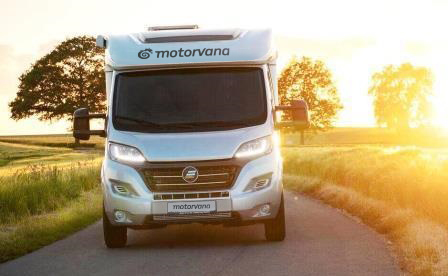
Many variables determine the cost of a motorhome rental or campervan hire in New Zealand, including RV size, seasonality, and optional extras.
For exact total costs, submit a SEARCH above. Our online order software will present all the RVs, whether motorhome, campervan or truck camper, ordered by price.
All the details about the RV, price, inclusions, rental depot location, and rental policies will be presented during our online order process.
Various optional items are available for hire with a RV rental, and these greatly affect the total cost. These items (e.g. camping table and chairs, bedding, shuttle transfer) are presented during our online order process, along with selectable pick-up and return times.
In many cases the RV rental company offers free miles / free kilometers and/or an inclusive package that bundles together a set of optional extras for one relatively low price. Our software will present such packages as well.
Similarly, RV rental companies often offer specials that involve optional extras. Such specials can be complicated and hard for customers to understand. Our software will carefully present such packages too.
We think our software is unique in terms helping our customers optimize their RV rental and minimize their costs in these important respects. Our aim is to provide you with the best value.
Barabara Falk & Ladd BurmasterWe recently rented a camper van from Motorvana and toured from Lyon to the Alps region where we did some spring skiing for 3 weeks then headed to the French Riviera for 10 days... we loved this mode of travel and found campsites easily in most places we went. My husband did all the driving and he was most impressed by the European drivers as opposed to the drivers in the USA. He found the camper fairly easy to operate even touring the mountains with the tight hairpin turns. Read More …
Stefan & Nicole PriceWe wanted to thank Motorvana and Avis Car away for the most incredible experience traveling through France, Switzerland and Germany. The Class B+ motor home provided was exceptional (we wish comparable vehicles were available in North America). The service and support from Motorvana made the planning and reservation process effortless. Responses to our many questions were incredibly prompt and thorough. Read More …
Bob FogelsonThis is a totally unsolicited note of pure praise for Motorvana from a retired local judge who admires competence and doesn't suffer fools graciously. If someone can please this cynical old coot, they probably can please anyone. My wife and I, in our 70's, recently returned from a ten week RV trip through Europe. Our RV rental was arranged through Motorvana, and picked up in Germany. Prior to this experience we had no prior dealings with or knowledge of Motorvana. Read More …